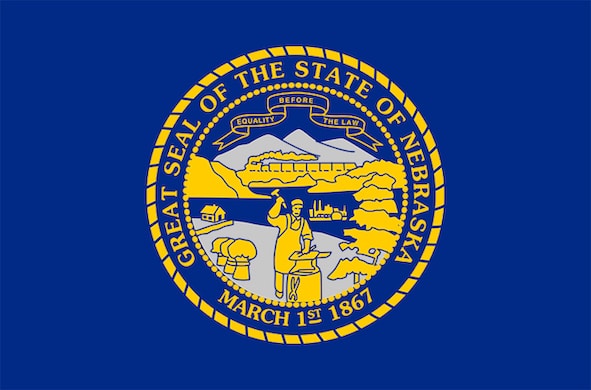As The Imprint reported in multiple stories last week, the Family First Prevention Services Act has become law. It includes the biggest change to the structure of federal child welfare finance since the establishment of the Title IV-E entitlement in 1980.
So what is actually in this thing? Youth Services Insider pored over all 103 pages of the law. Here is part three of our three-part breakdown of its two major sections and all of the additional provisions inside Family First.
EVERYTHING ELSE
The foster care prevention services and the limits on congregate care are the central reasons for this legislation. But there are several significant provisions that are included in the bill that became law.
Adoption Assistance: The law pays for the projected spending on foster care prevention services with definite cuts to spending on adoption assistance.
Federal adoption assistance payments under Title IV-E used to be pegged to income tests in the same way as the IV-E foster care payments. So only children adopted from parents who were very poor carried a federal contribution; states had to provide the full subsidy for other children.

The Family First Act, first drafted by Sens. Orrin Hatch (R-Utah) and Ron Wyden (D-Ore.), became law this month.
The Fostering Connections to Success and Increasing Adoptions Act, signed in 2008, set that income test to gradually expire by 2019. It began with de-linking the income test for teens (a low percentage of the youth adopted from care) and worked backward to newborns and babies (the biggest portion of adoptees). The caveat was that states needed to spend the savings they reaped on helping adoptive families.
This law freezes the de-link at 2-year-olds and delays it until the year 2024. In the meantime, the GAO will conduct a study to determine if states are using the money they save from the adoption de-link to serve adoptive families.
Adoption and Guardianship Incentives: In 2014, the Preventing Sex Trafficking and Strengthening Families Act reworked the federal adoption incentives program which rewards states for finalizing the adoptions of youth in foster care. That law shifted the program to include guardianships, place more emphasis on the adoption of older youth in foster care, and pegged the incentive calculations to more recent data.
The Family First simply extends the incentive program to 2021.
Reunification: As Family First adds time-limited services under IV-E, it takes away time limits on services under the “reunification” section of Promoting Safe and Stable Families (Title IV-B), the block grant for family preservation.
There is a 15-month limit on the funds once a child enters foster care; that’s gone, now there is no limit on how long services can be provided during that stay. And now, the funds can also be used to continue supports for 15 months after the child returns home.
It is unlikely to happen, but Promoting Safe and Stable Families would be vulnerable to any sequestration that’s prompted by the tax cut package that President Trump signed into law.
Kinship Navigator Programs: Currently, the federal government makes $15 million in grants per year for “kinship navigator” programs under the Family Connections grants program, which was established by the Fostering Connections to Success and Increasing Adoptions Act. These programs serve as one-stop centers for assistance to relatives who are caring for children.
The Family First Act offers an additional 50 percent match on any funds spent by a state for a kinship navigator program that has earned the promising/supported/well-supported status.
Cross-State Placements: By the year 2027, all states must move to an “electronic interstate case-processing system.” A $5 million pot of money is available from 2018 to 2022 for states to apply to get assistance developing such a system.
This emanates from bills in both chambers called the Modernizing the Interstate Placement of Children in Foster Care Act.
Foster Home Licensing: By October 2018, HHS must have model licensing standards for foster family homes.
- States will have to certify if its licensing is in accord with the model and explain why not.
- Acknowledge if states have waived some standards for relatives.
If HHS is looking for inspiration, it might look into the National Model Family Foster Home Licensing Standards, a document put together in 2014 by the American Bar Association, Generations United and the National Association for Regulatory Administration.
Foster Home Recruitment and Retention: Section 431 of the Social Security Act lays out the federal definitions of “family preservation services” and “family support services.” In both cases, most but not all of the defined options pertain to assisting birth families.
Family support services do include the strengthening of families, including foster and adoptive ones. The Family First Act adds the “support and retention” of foster families as a newly defined service. The bill also appears to free up a very small pot, $8 million available through 2022, for recruitment and retention efforts.
This fall, The Imprint of Social Change produced a report finding that at least half of states had either lost foster home capacity, or had seen any gains outpaced by a rising number of youth in care. While some states have had recent success recruiting new homes, many others are struggling to move the needle despite dedicated efforts to do so.
This is the issue that fits squarely in between the two major gambits of the Family First Act. If the front-end services succeed, that will lower the number of youth coming into foster care. And that will be necessary, because if the congregate care limitations work in reducing the use of such placements, those youth would presumably end up in foster homes.
Plan for Prevention of Maltreatment Deaths: Each state would be required to provide two things: A description of the steps the state is taking to compile complete and accurate information on maltreatment-related deaths, and a description of steps that the state is taking to implement a “plan to prevent the fatalities.”
This notion was promulgated as part of the recommendations of the Commission to Eliminate Child Abuse and Neglect Fatalities, which produced its final report in 2016, and was included in Senate legislation introduced this fall after the Finance Committee concluded an investigation into foster care privatization.
Chafee Independent Living: The Chafee program offers $140 million each year for states to offer independent living programs to youth who are aging out of foster care into adulthood.
The eligibility threshold for participants is 21. For states that have extended foster care to include 18- to 21-year-olds – Ohio recently became the 25th state on that list – they can now extend eligibility through age 23.
Chafee Education Training Vouchers (ETV): This program provides $45 million per year to states to assist youth aging out of care with college costs. The current age ceiling is 23, and Family First raises that to 26, with the rider that no single student can get a voucher for more than five years.
This proposal was originally part of the bill back in 2014 that changed the adoption incentive program, but did not make the final version. As we wrote back then, there is some downside to this shift since it appears to come without any increase in funding.
Without a proportional increase in funds for ETV, the expansion implicitly instructs states to spread the funds over a larger number of students; perhaps thousands more in highly populous states. Not all states spend their entire ETV allotment, but many do. In California, there is routinely a wait-list for ETV grants already, and the state’s process favored current recipients over new applicants.
When this idea was first floated, California advocates told Youth Services Insider that it could cause real problems without more money.
“If this does go into effect and a state like [California] continues to implement ETV along their current lines, we’ll have even less freshmen and sophomores receiving funding,” said Serita Cox, co-founder of iFoster, in a 2013 conversation with YSI. “And I would argue that if we want to meaningfully move the needle on those earning their bachelor’s degree, having funds for those freshmen and sophomores is more important than a 26-year-old on their graduate degree.”
If you are interested in federal juvenile justice and child welfare policy, read our special issue “Kids on the Hill.” Just hit this LINK.






